|
When visiting the Baltic port city of Gdansk in northern Poland, the scientific traveller is in for a treat. Remnants of famous astronomers and physicists, impressive astronomical and solar clocks, a time ball and a science museum, can all be found within the boundaries of this pretty place. What makes it even better is that all this can be enjoyed while tasting some of Poland's best cuisine together with many of its tastier beers. In fact one of its most famous residents, actually ran a 17th century brewery while at the same time defining new star constellations from the roof of his house! Johannes Hevelius Monument Johannes Hevelius (or Jan Heweliusz in Polish), was born in Gdansk (then called Danzig) in 1611, the son of wealthy brewing merchants. When he was seven years old he entered the Gymnasium at Danzig where he was latter taught mathematics by a man called Peter Krüger. Krüger was the one who planted the seeds of astronomical interest into the mind of the young Johannes. At the age of nineteen Hevelius went to the university of Leiden, in Holland. He went there not to address his astronomical enquiries but to study law, as this was seen as more useful for someone destined to take over the family brewery business. His interest in astronomy, however, never waned and he still found the time to study the mathematical sciences while in Leiden. His enthusiasm was such that he eventually left Holland in order to travel around Europe to meet the famous astronomers of the time. When he was about to seek out the great Galileo in Italy, his parents, who thought it was more important that he got engaged with the family brewing business than spending his time networking with scientists, called him back to his hometown. He returned there in 1634 and was admitted to the Brewer's Guild in 1636. A year earlier he had got married to his neighbour Katherine Rebeschke and at this point it seemed as if Hevelius was a settled family man focused on his family business. In 1639, however, two events occurred that reawakened his passion for science. A visit to his old teacher Peter Krüger and the observation of a solar eclipse were enough to thrust him back into the observation of stars and he eventually built his own observatory at the roof of his house in 1641. The instruments he constructed himself were extremely accurate for their time and he was soon making pioneering astronomical observations. Luckily for Hevelius, his wife Katherine took over most of the administrative duties of running the brewery thus freeing up some time for him to engage in his scientific activities. Plaque presenting the point where Hevelius used to live Hevelius discovered numerous comets, defined seven new star constellations still used today, studied sunspots, the planet Venus, and above all produced the most detailed study of his time of the moon; this was his famous "Selenographia" which he published in 1647. In his study of the moon, he also discovered what is known as "lunar libration in longitude". Put in simple words, this means that due to the moon's varying speed in its orbit around the Earth, we are able to view more than half of its surface over the period of one orbit. This is contrary to the popular belief that only half of the moon is visible to us. Map of the Moon from the Selenographia The new constellations that Hevelius defined and we still use today were: Lacerta (the Lizard), Leo Minor (the Lion Cub), Canes Venatici (the Hunting Dogs), Vulpecula (the Fox), Lynx (as it was so faint it was said that you needed to possess the eyesight of a Lynx, which Hevelius did, in order to recognise it), Sextans (an instrument he used by Hevelius for observation), Scutum (the Shield, originally called Scutum Sobiescianum in honour of Jan Sobieski III, the King of Poland and sponsor of Hevelius's work). He also defined another three constellations that astronomers do not use today. Reconstruction of the observatory of Hevelius at the Museum of Tower Clocks Hevelius's fame as an astronomer soon grew and he received visits from celebrities such as the young Edmond Halley (the later to be famous English astronomer) and the Polish king. He also became fellow the Royal Society of London, a huge honour for a non - Englishman at the time. It is interesting to note that Halley was sent to Gdansk by the Royal Society in order to settle a dispute between Hevelius and the English Physicist Robert Hooke (after which Hooke's Law in physics is named). An argument had broken out between the two men on whether Hevelius's instruments were more or less accurate that the telescopes used by Hooke and other scientists. Certificate of Hevelius for acceptance to the Royal Society It is a testimony to the remarkable personality of Hevelius that between making pioneering astronomical observations he still found the time to be involved in municipal matters of his hometown for which he served as councillor from 1651 until his death. He was also the church administrator at St. Catherine’s Church (where he is now buried) and served for a decade as a court juror. At the same time he continued to brew some of the best beer in the region and so famous was his Jopenbier beer that the (now renamed to Piwna street) was once named Jopengasse. Just as things seemed to be going well for him, however, his longtime wife Katherine died in 1662. Fate had it that a year later he married 16-year-old Elizabeth Koopman. Contrary to his first wife, Elizabeth was more interested in astronomy than in running the brewing business. She became Hevelius's scientific partner and is considered by many as the first female astronomer. Her contribution to astronomy is was of such importance that both a minor planet and a crater on Venus are named after her. Hevelius and his second wife Elizabeth taking measurements The couple continued to produce scientific work until in 1679 when a fire destroyed their observatory. Although they did manage to repair most of it (and thus observed the Great Comet in 1680), Hevelius never managed to completely overcome the shock from the disaster and he finally passed away in 1687. Hevelius's work on lunar topography is considered so important that a lunar crater has been named after him. Remnants of the great astronomer can be found all over the city of Gdansk, such as the impressive monument of him gazing at the stars (depicted on a wall opposite), close to St. Catherine's Church). Hevelius Monument gazing at the star painted wall In St Catherine's Church itself where he is buried, one can find a memorial plaque, with some information on his life. Hevelius memorial plaque At the tower of St Catherine's Church there is a small museum with tower clocks which is well worth a visit. When I was there, there was also a small exhibition of astronomical instruments that Hevelius had created together with a small reconstruction of his observatory. This was definitely an added bonus! Exhibition with some of the instruments constructed by Hevelius in the Tower Clock Museum If you are interested in visiting a science museum, on a hill overlooking the city you can find the Hevalianum, named after the great man. If you like a drink, however, the most enjoyable way to pay homage to our astonomer, is to sip the beer dedicated to him at one of the numerous excellent bars on Piwna street, (the old Jopengasse which was named after his Jopenbier beer). This is also an excellent way to digest the atmosphere of a truly great city. The Johannes beer dedicated to Hevelius There are plenty of other intriguing sites for those visiting Gdansk with an interest in science. In fact, there is another scientist that was born in the city whose name is probably more familiar to most of us than that of Hevelius. Daniel Gabriel Fahrenheit, was a physicist born in Gdansk (then still called Danzig), in 1686. He was the inventor of the first mercury thermometer, the first accurate thermometer of practical use. More famously, he defined the first temperature scale to be widely used, now known as the Fahrenheit Scale. His inventions were so important that he is considered a pioneer of exact temperature measurement. You can find a large thermometer dedicated as a monument to great physicist right in the centre of the Old Town. The Fahrenheit Monument Not far from the Fahrenheit Monument you can also find the house where the physicist was born. A plaque informs you of its presence. The birthplace of Fahrenheit In the Old Town, St. Mary's Church, is one of the top sites visited by tourists. For those with a scientific interest, a real delight awaits them just inside the church. The 15th century astronomical clock is one of the most impressive of its kind. It is of great beauty and complexity displaying amongst other things the phases of the moon, the position of the moon and sun in relation to the zodiac signs, and various religious dates. Unfortunately I was personally out of luck when visiting, as it was covered for maintenance but even the cover replica, you will agree, looks impressive! Cover of astronomical clock in St. Mary's Church If you are interested in time measurements you will also like the solar clock located on the exterior of St. Mary's Church. It may not be as impressive as the astronomical clock inside but originally constructed in 1553, it is certainly worth a view. Solar clock Still in the heart of the old town, on the walls of the Gothic Town Hall, another exhibit of scientific history can be found. Gdansk was a trading city and in the older days for trading to occur smoothly standards of measurement were displayed in prominent positions. At the entrance of the Gothic Town Hall are the old Gdansk standards of length: the foot (equal to 28.7 centimetres), the ell (equal to 2 feet), and the fathom (equal to 6 feet), In 1816, after the partition of Poland, the Prussians replaced these with their own, slightly longer units. Standards of measurement outside the Gothic town hall The scientific secrets of Gdansk do not end here. There are plenty more to see, including the Technical University of Gdansk, more solar clocks, a medieval crane, the birthplace of a great philosopher, the old Town Hall where Hevelius stored his beer, and even some connections to Poland's greatest astronomer Nicolaus Copernicus. I will finish this tour with a sight that those of you that have visited the Greenwich observatory, where the famous meridian lies, will be familiar with. Gdansk’s Nowy Port (New Harbor), the largest port in Poland is a short drive from the city centre. This is where you can find a historic lighthouse, constructed in 1894 (as a copy of a lighthouse in Cleveland, Ohio), which operated until 1984. The feature reminiscent of Greenwich is the restored time ball which is nowadays dropped every two hours between 12 -6 pm. Time balls were used in many world ports (including of course London) during the 19th century. At a predefined time (usually around noon), a large ball was dropped from a height for mariners to synchronise their ship clocks. This was not only important for time keeping but also for navigational purposes, as accurate timing was important for the determination of a ship's longitude. The old lighthouse and time ball This concludes my scientific tour of Gdansk. If you enjoy scientific sites, good food and beer, be sure to visit this impressive Baltic port. You will not regret it!
Edinburgh is the birthplace of one of the greatest scientists of all time and although many visitors will have heard of the likes of Newton and Einstein, few will be familiar with the name of James Clerk Maxwell. Most physicists, on the other hand, would rank Maxwell alongside the above mentioned giants of physics. In fact, there was no greater admirer of the man than Albert Einstein himself, who kept a portrait of the Scot in his office and who once remarked that: “One scientific epoch ended and another began with James Clerk Maxwell”. The young Maxwell at Cambridge James Clerk Maxwell was born in Edinburgh’s New Town, at 14 India Street, on the 13th of June 1831 and was brought up on the family estate at Glenlair, near Dumfries in southwest Scotland. When Maxwell returned to Edinburgh to start school and appeared at the Edinburgh Academy (still functioning today), his country boy appearance was the subject of mockery from his new classmates and he soon acquired the nickname “Dafty”. That changed when his academic capabilities started to show. Astonishingly, he wrote his first scientific paper when he was just 14. One of his father’s friends, Professor James Forbes read the paper to the Royal Society of Edinburgh, as James was too young to present it himself. In 1847 at the age of 16, he enrolled at Edinburgh University and when he was 18, he published another two papers which he was once again deemed too young to present at the Royal Society himself. In 1850 he moved to Cambridge University where he distinguished himself as Second Wrangler and joint winner of the prestigious Smith’s prize for his performance in mathematics. During his Cambridge years he was in frequent contact with many outstanding undergraduates who at times would visit his room seeking his mathematical advice. Maxwell with his wife Katherine and their dog In 1856, the year his father passed away, Maxwell became Professor of Physics at Marischal College, Aberdeen. Still only 25 years old, he was at least 15 years younger than most of his colleagues. Although busy with organising his teaching (which included weekly evening lectures to working men at the Aberdeen Mechanics’ Institute), he carried on with his scientific work that included the publication of a breakthrough paper on the theory of gases. His research on the stability of Saturn’s rings (a problem that had eluded scientists for 200 years), resulted in his being awarded the prestigious Adams prize, further enhancing his reputation. Aberdeen also brought him good fortune in his personal life as he got married to the daughter of the Principal, Katherine Mary Dewar, in 1858. In 1860 he left his native Scotland once again, this time appointed to the Chair of Natural Philosophy and Astronomy at London’s King’s College, where he carried out some of his most important scientific works. He was awarded the Rumford medal for his research on colour vision and in 1861 produced the world’s first ever colour photograph which he chose to be of a tartan ribbon, a tribute to his native country. He also continued to publish extensively on the behaviour of gases. It was, however, his work on electromagnetism that would eventually elevate him to the status of Einstein and Newton. First colour photograph What Maxwell did, in simple words (building on the work undertaken by scientists such as Michael Faraday), was to suggested that light, electricity and magnetism could all be explained in a single electromagnetic theory. His final paper on the subject, “A Dynamical Theory of the Electromagnetic Field”, was written in 1864 and is considered one of the most important papers ever published in physics. Not only did it explain electromagnetism, but it also provided inspiration to 20th century scientists leading to the development of theories such as the theory of relativity and quantum theory. In 1865 Maxwell resigned the chair at King’s College and returned to Glenlair with his wife Katherine. He stayed there for 6 years producing research papers and books on topics such as heat theory and engineering. In 1871 he returned to Cambridge to become the first Cavendish Professor of Physics and was put in charge of the development of the Cavendish Laboratory, which eventually became one of the most important research hubs in the world. James Clerk Maxwell died at the young age of 48, in 1879. His remains were brought back to Scotland and buried beside those of his parents in the ruins of the old Kirk, at the village of Parton (close to Glenlair). Maxwell’s birthplace is a terraced house built for his father in 1820. The James Clerk Maxwell Foundation founded in 1977, acquired it in 1993. The original character of the house has, to a large extent, been preserved. Minor alterations have been made primarily for converting the former dining room into a small museum. The museum displays memorabilia such as portraits, manuscripts and books associated with Maxwell, his family and his scientific contemporaries. Maxwell's birthplace at 14, India Street It is possible to visit the house (admission free) and one hour tours are conducted every Tuesday. For more information on the site and how to organise a visit, check out the website: http://www.clerkmaxwellfoundation.org. A 15 minutes’ walk from his birthplace, at the eastern entrance of George Street, there is a statue of Maxwell together with his beloved dog Toby, a fitting tribute to the greatest scientist ever born in Scotland. A Charitable Trust has also been established to conserve and preserve the family home of Maxwell at Glenlair (a 2.5 hr drive from Edinburgh). A visitor centre has been set up and visits can be arranged through the Glenlair Trust website: http://www.glenlair.org.uk. Maxwell's statue in Edinburgh If you want to find more about James Maxwell and the fascinating scientific history of Edinburgh and Glasgow, check out the Scientific Secrets of Edinburgh and Glasgow here!
How many people, even those with a scientific interest, are aware that Edinburgh is associated with one of the holy grails of astronomy? Thomas Henderson's House, Hillhead Crescent, Edinburgh The story is one that begins many thousand miles from Edinburgh, at the Cape of Good Hope, South Africa. It is where the Scottish astronomer, Thomas Henderson, was appointed H.M. Royal Astronomer in the year 1831. Born in Dundee in 1798, he began his career as a lawyer’s clerk, before his passion for astronomy eventually led to his appointment. Although complaining of the difficult working conditions (from defect telescopes, to having to check for snakes under his bed), he made a substantial number of astronomical observations during his time at the Cape. After just over a year, however, he decided he had endured enough of the “dismal swamp” as he called it, his frail health being affected by the local climate. His predecessor had died from scarlet fever and was actually buried in the observatory grounds, so Henderson returned to Scotland probably trying to avoid a similar fate. Portrait of Thomas Henderson During his last month in South Africa, intrigued by the observation made by another astronomer, Manuel Johnson based on the south Atlantic island of St Helena, that the star alpha Centauri (technically a star system) which is the closest to our solar system, exhibited a substantial change in its position relative to other stars, he focused his work on this discovery. What he was primarily interested in was the detection of a parallax for alpha Centauri, the apparent change in position of an object when viewed from different vantage points. As our planet moves around the sun, the view we get of a star changes ever so slightly during the year as it appears to move relative to its background. The fact that alpha Centauri seemed to exhibit a measurable movement, suggested that a parallax effect might be at play. Importantly, by obtaining the parallax of an object, it is possible to estimate its distance (the closer the object is to the observer, the greater the parallax). As stars are at an immense distance from us, their parallax is extremely small and is not detectable to the naked eye. Ever since antiquity, astronomers had been trying, without success, to detect this subtle effect. Nineteenth century telescopes however, had reached the technological level required for parallax detection and astronomers were caught up in a tantalising race to reach this holy grail of astronomy. The Observatory at the Cape of Good Hope Even so, for reasons that are still not entirely clear, Henderson apparently saw no urgency in further analysing his observations of alpha Centauri and instead applied himself to more routine tasks after returning to his native country. Had he possessed the confidence to formally publish his results, his claim to fame would have been much greater. The announcement from the German astronomer Friedrich Wilhelm Bessel that he had managed to measure the parallax and therefore the distance of another star, 61 Cyg, finally motivated Henderson to analyse his results in more detail in late 1838. In January 1839, more than six years after his observations had been made, he published his results which were read at a meeting of the Royal Astronomical Society (RAS). His initial parallax estimations determined the distance of alpha Centauri to be at 3.25 light years (one light year being the distance travelled by light in a vacuum in one year) when in fact it is 4.37 light years. He later improved his estimate to 3.57 light years, after obtaining better quality results from his successor (and good friend) at Cape Town, astronomer Thomas Maclear. Thomas Henderson Commemoration Plaque, Calton Hill, Edinburgh Although the accuracy of the results may not be great by modern standards, Henderson had gauged the distance of a star, a feat of historical significance. Incredibly, he had achieved this without fully believing or realising it himself, and so came second to formally publishing a result. It is because of this that it was Bessel and not Henderson who was awarded the Gold Medal from the RAS and who is generally acknowledged as the winner of the scientific race. In fact, within just a few months, three astronomers had published their star parallax results (the third one being the German-Russian astronomer Friedrich Georg Wilhelm von Struve). So important was the feat that when John Herschel, the president of the RAS, awarded the medal, he declared: “Gentlemen, I congratulate you and myself that we have lived to see the great and hitherto impassable barrier to our excursions into the sidereal universe—that barrier against which we have chafed so long and so vainly - almost simultaneously overleaped at three different points. It is the greatest and most glorious triumph which practical astronomy has ever witnessed”. So how is this fascinating story of science history connected to Edinburgh's Calton Hill that overlooks the eastern end of Princess Street (Edinburgh’s main shopping street)? After returning to Scotland Henderson was appointed the first ever Scottish Astronomer Royal and Professor of Astronomy at Edinburgh university. He worked at the Calton Hill observatory for ten years, recording over 60,000 observations of star positions. He was elected a fellow of the Royal Astronomical Society in 1832, the Royal Society of Edinburgh in 1834, and the Royal Society of London in 1840. Henderson died from heart disease at his home, in 1844. Two years before his death he met Bessel in Edinburgh in what he described as one of the highlights of his life. A plaque outside the main observatory building commemorates him and the house in which he spent his final years is also signposted at the foot of the hill. Although little known and difficult to imagine, a scientific quest which started in antiquity, was concluded in this very part of the city of Edinburgh. The Calton Hill Observatory The Calton Hill Observatory has many other stories that will certainly fascinate you. To learn more about those and about several other sites and aspects of the rich scientific history of Edinburgh & Glasgow, check out the Scientific Secrets of Edinburgh & Glasgow!
Although not known to many, Jewish medieval scholars made significant scientific contributions, primarily in the fields of astronomy and cartography. Catalonia and the city of Girona in particular, was one of the centres of Jewish culture during those times. Important figures such as the famous medieval Jewish scholar Moses ben Nahman commonly known as Nachmanides, lived in this part of the world. In fact, one could present a whole list of influential figures who grew up or flourished in this city. Courtyard of Museum of Jewish History, Girona In this post, I will focus on Jacob ben David Bonjorn, born in Girona at around 1330 and who was one of the leading figures of astronomy in the 14th century. Working for the King of Aragon Peter "the Ceremonious" at the town of Perpignan (a short distance from Girona and now part of France), he produced a set of important astronomical tables extensively used by astronomers after him. The tables (actually based on those of another Jewish astronomer, Levi ben Gerson, who lived in Orange in southern France in the 14th century) attempted to deal with one of the most complex problems of astronomy at the time: the calculation of the timing of true syzygies. This is when the moon, sun and the Earth lie on the same line, or put more simply, it is the occurrence of new or full moons. Bonjorn’s tables provided a list of all such events for the period from 1361 to 1391. Importantly, from the astronomical data presented, the details of lunar and solar eclipses could be deduced. Bonjorn also incorporated a method by which it was possible to use the tables for predictions beyond 1391. The importance of his work is highlighted by the fact that it has survived in many manuscripts in Hebrew, Latin, Catalan, and Greek, and was used extensively by astronomers until the 15th century. The Astronomical Tables in the Museum of Jewish History Worth noting apart from the scientific achievements of our astronomer, is an episode from Bonjorn’s family life concerning his parents, which caused a major stir at the time. His mother Ester was the daughter of Astruc Caravida, a powerful Jew of illustrious lineage. As was common then, her parents arranged her marriage and the chosen husband was David Bonjorn de Barri, who (as his son later became) was a famous astronomer based in Perpignan. The marriage was not a happy one, as Bonjorn de Barri mistreated his wife who eventually demanded a divorce. When her husband refused it, she targeted his most vulnerable point: Ester got hold of her husband’s books and tools and refused to return them unless she got her way. Her tactics paid off and after going back to Girona, she was the eventual winner of a long legal battle succeeding in having her dowry returned to her. If you are interested in medieval Jewish astronomy and Jewish culture in general, you will thoroughly enjoy a visit to the Museum of Jewish History located in Girona’s beautifully preserved old Jewish Quarter. Exhibits of scientific interest include a reproduction of the famous Catalan Atlas (the original is held in the French National Library, Paris). This was a “map of the known world” created in 1373 by two Majorcan Jews, Cresques Abraham and his son Jehuda who were commissioned by the Catalan monarch. It was subsequently offered as a wedding gift to the Dauphin of France and is a prime example of medieval cartography. Part of the Catalan Atlas Jewish astronomers were also renowned astrolabe makers. An astrolabe is a scientific instrument used to measure the position of celestial bodies. Several Jewish astronomers invented modifications of the instrument to improve its accuracy and reliability. You can learn more about this at the Museum of Jewish History. Astrolabe Information from Museum of Jewish History After a visit to the museum, a wander around the maze of cobbled streets of the Jewish Quarter is thoroughly recommended. Finish off at the wonderful campus buildings of Girona University, whose history goes back to 1446. To rest from the uphill walk, relax at the outside seating of the Campus Bar, a laid back cafe and bar serving cheaply priced coffee, great sandwiches, snacks and local beers. Directly opposite the old university buildings, it is an ideal place to contemplate the rich history of a truly enchanting city. Jewish Quarter Outside Seating of the Campus Bar facing the University Buildings Finally, if you can choose when to visit Girona, the most exciting time is during the Temps de Flors flower festival which takes place every May. Amazing flower decorations, real works of art, are exhibited all around the city and all museums can be visited for free. For the scientific traveller, floral exhibits with a scientific theme can also be found! The Periodic Table with Flowers Celebrating Science!
Asclepius was the ancient Greek god of medicine and healing, worshipped in many parts of ancient Greece including Athens. He was in fact a semi – god, son of divine Apollo, and the mortal Koronis from Trikala in central Greece. The descendants of Asclepius, who themselves practised medicine, were known as the Asclepiads, the most famous of which was Hippocrates of Kos, often referred to as the “father of medicine”. The rod of Asclepius, a serpent-entwined rod wielded by the god, is used as a symbol of medicine even to this day. Asclepius was worshipped in sanctuaries called “Asclepieia”, one of the most important of which was in Epidavros in the Peloponnese, where a world famous ancient theatre is also situated. Importantly, the Asclepieia did not only serve as a place of worship but also offered health care, combining the medical science of the time with a variety of religious and magical elements. A holistic type of medical care was thus offered, where particular emphasis was given to the emotional state of patients. The centres were therefore built in locations of great natural beauty. Buildings such as theatres and gymnasiums, used by patients for physical exercise and recreation, were constructed next to where physicians practised medicine. Most of the above is probably known to anyone with an interest in Greek mythology. How many of you are aware, however, that the ruins of a sanctuary to Asclepius can be found in the most unlikely of regions, thousands of miles from Greece? The city Ἐμπόριον (Greek: Ἐμπόριον, Emporion, meaning “trading place” – “market”) was founded in the 6th century BC by Greek colonists from Phocaea (an ancient Ionian Greek city). It is in present day Catalonia, Spain, a short drive from the medieval city of Girona and a 1 hour and 40 minutes’ drive from Barcelona. The colony was founded for trading purposes and the initial settlement (Palaia Polis) was followed by a second one (Neapolis) the remains of which you can visit today. Part of the Empuries Ruins Overlooking the Mediterranean Sea The ruins of Emporion (now called Empuries), lie facing the Mediterranean Sea in an exceptionally beautiful setting. There is an archaeological park and the branch of the Archaeology Museum of Catalonia in Empuries (MAC-Empuries) offer visitors an enriching experience. A visit to the Greek city and the adjacent Roman one (that was subsequently built after the Romans arrived in the 2nd century BC), can be followed by a tour through the museum. The museum contains representative objectives from the excavations that commenced about 100 years ago. Beautiful Setting of Empuries Ruins There are many interesting artefacts to observe but without doubt the most impressive one is a beautifully refurbished statue of Asclepius which was found in 1909 (see top of page). The statue is made of both Pentelic and Parian marble. It once stood in a small sanctuary dedicated to the god. A replica of the statue has been placed in the ruins so you can see Asclepius gaze towards the Mediterranean Sea, to where he originally came from. Replica of Asclepius Statue in the Ruins A trip to the Girona region is full of treats for the scientific traveller (including some great cafes and bars to digest your knowledge in) to be described in following posts! If on the other hand you are more interested in the Asclepieia and in particular the ruins of the one located on the foot of the Athens Acropolis, checkout the Scientific Secrets of Athens guide.
|
- MY SCIENCE WALKS
- SHORT BIO
-
STELLARIUM RESOURCES
- Introduction
- Astronomy and the Odyssey
- Circumference of the Earth (Eratosthenes)
- Circumference of the Earth (Posidonius)
- Distance to the Sun (Aristarchus)
- Size of the Moon (Aristarchus)
- Distance to the Moon (Hipparchus)
- Lunar eclipse of Alexander the Great
- Journey of Pytheas
- Babylonian Cycles
- Direction to Mecca
- Great Conjunction of 1166
- Medieval supernovas
- Chinese pole star
- Sidereal day of Aryabhata
- NAVIGATING WITH THE STARS
- ANTIKYTHERA MECHANISM
- BOOKS & COURSES
- TRAVEL BLOG
- Contact Me
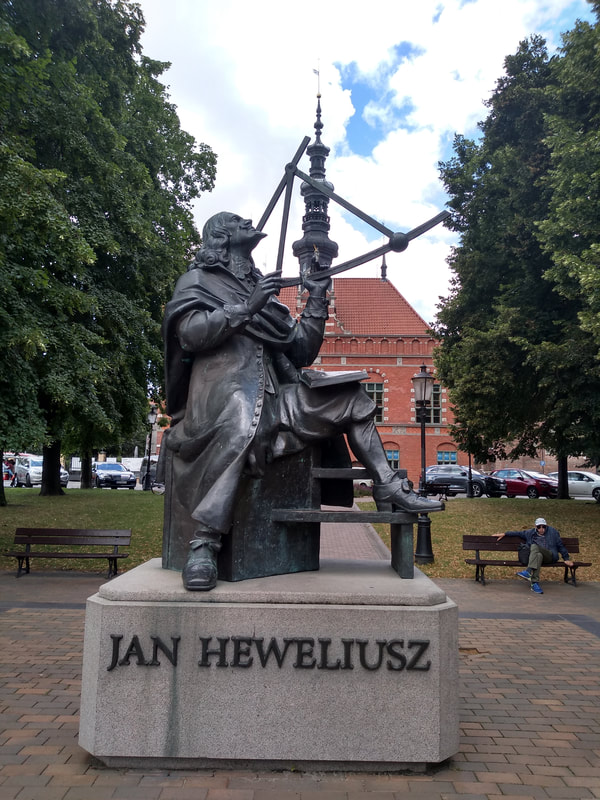
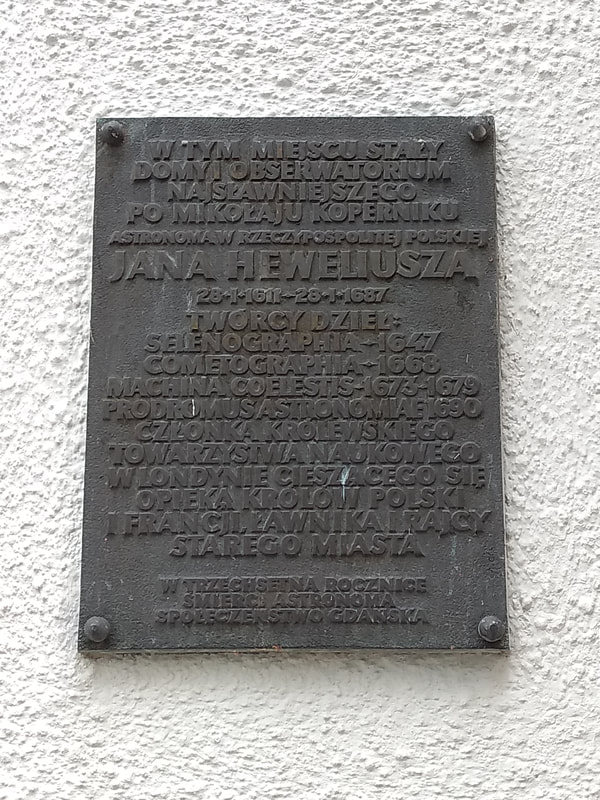
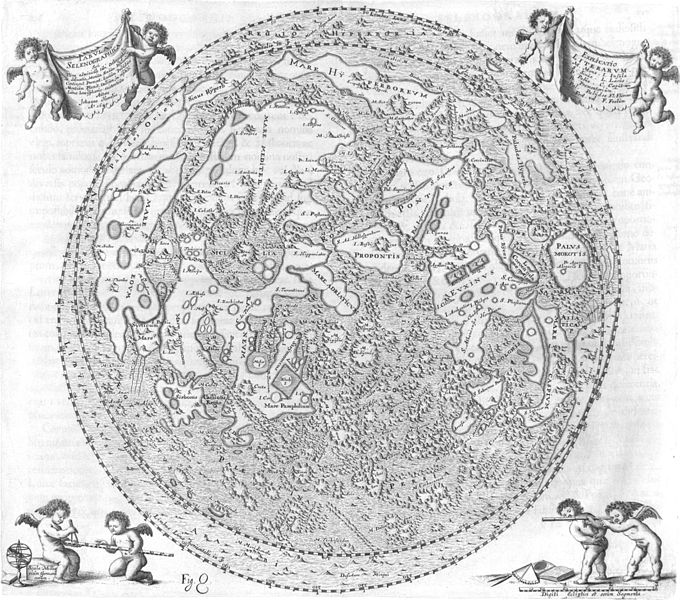
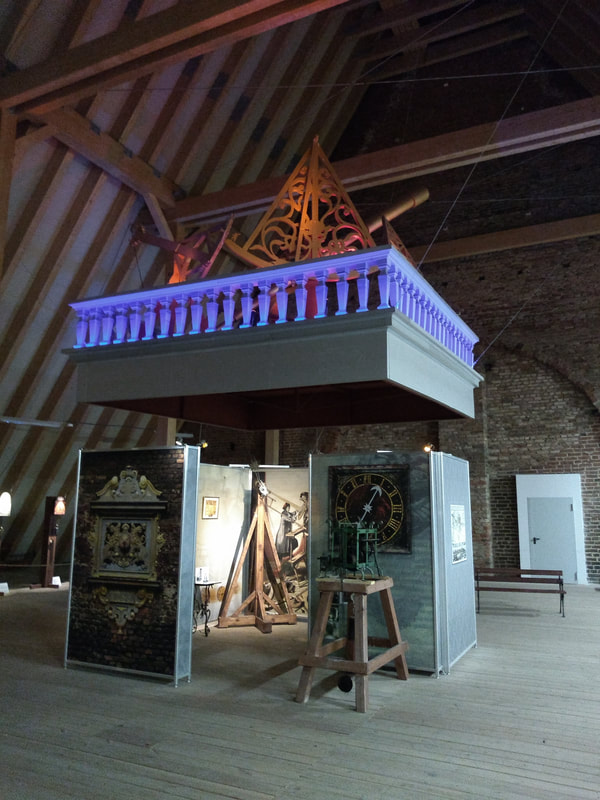
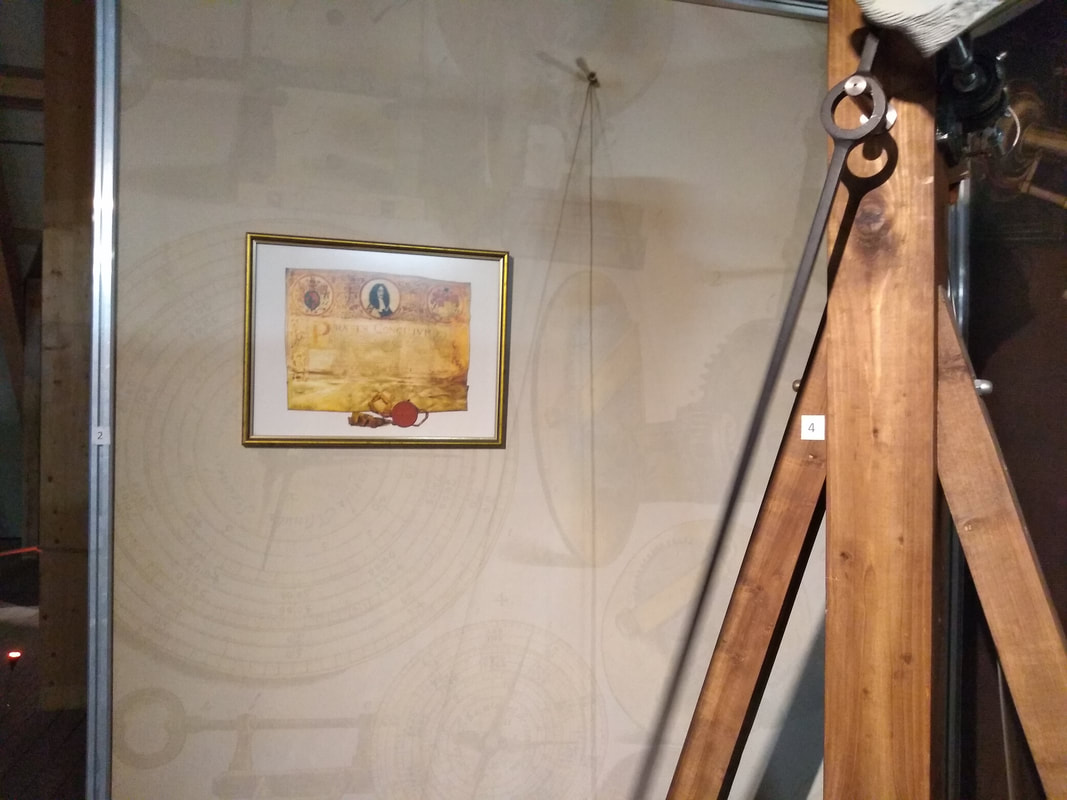
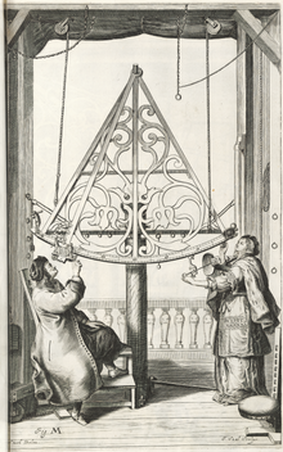
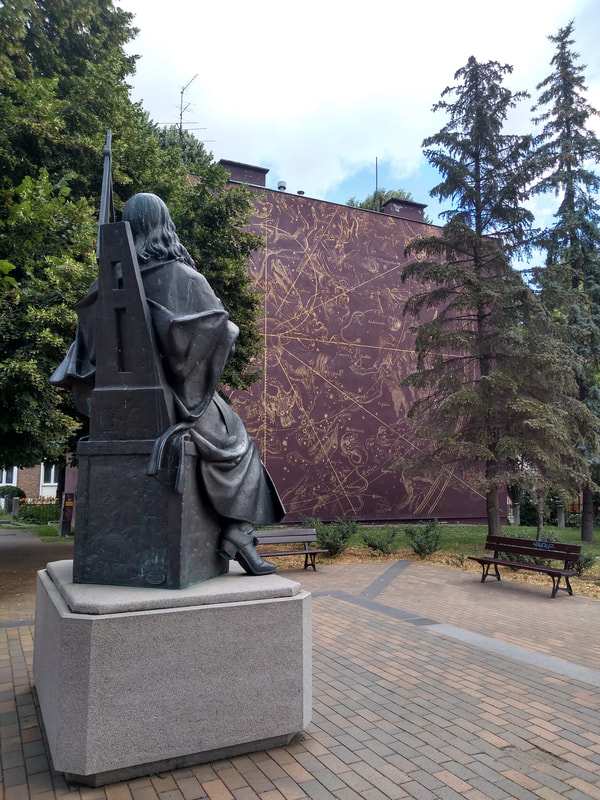
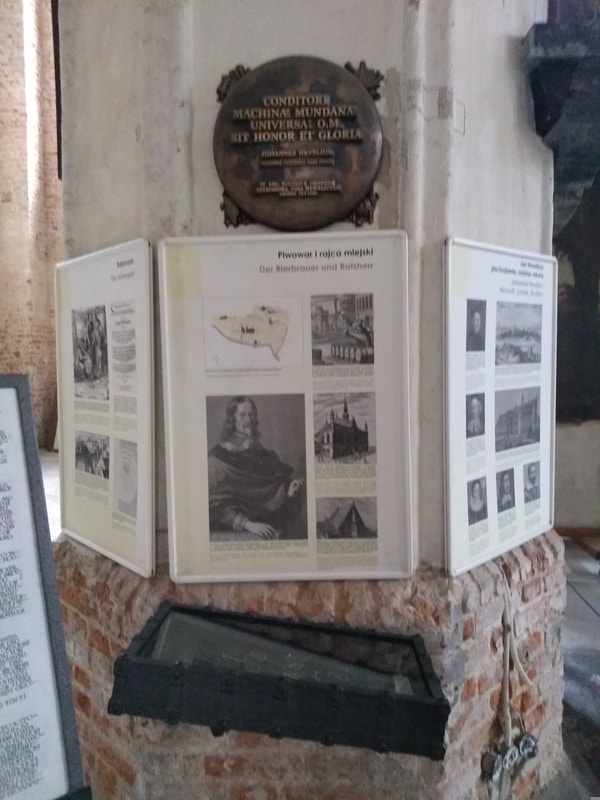
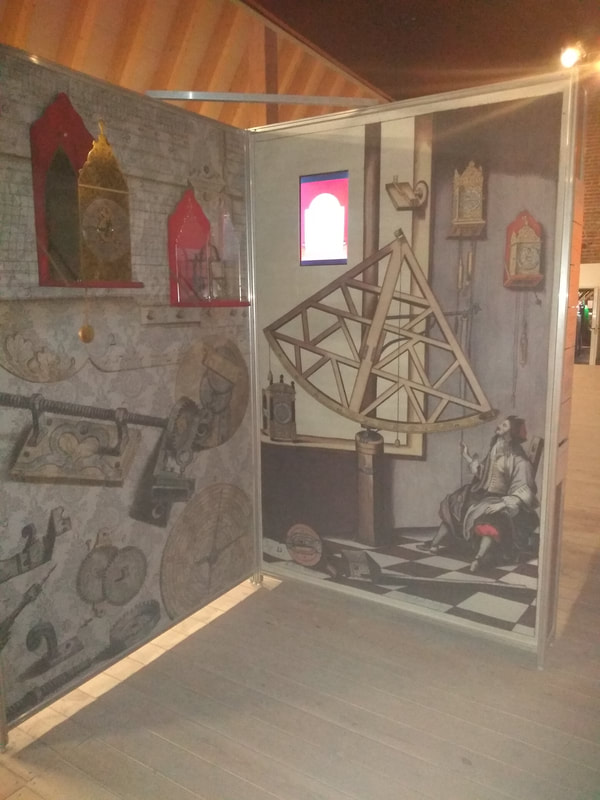
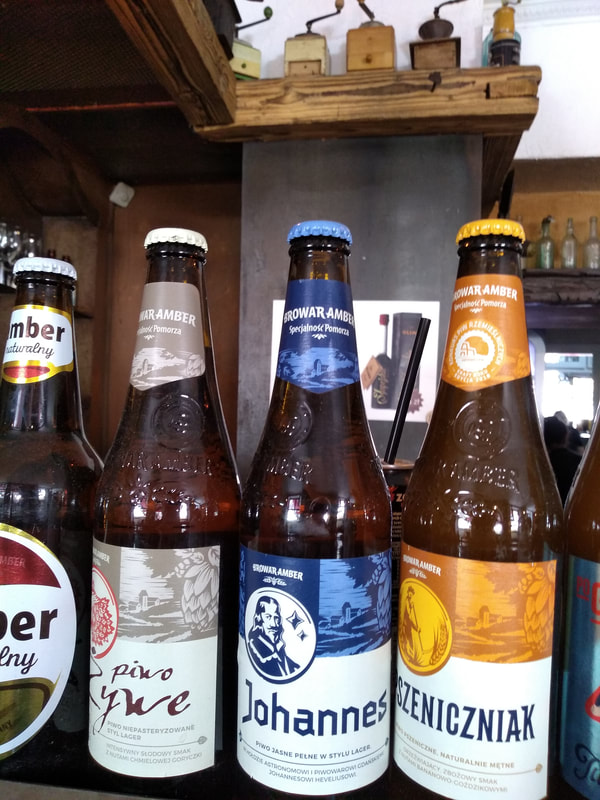
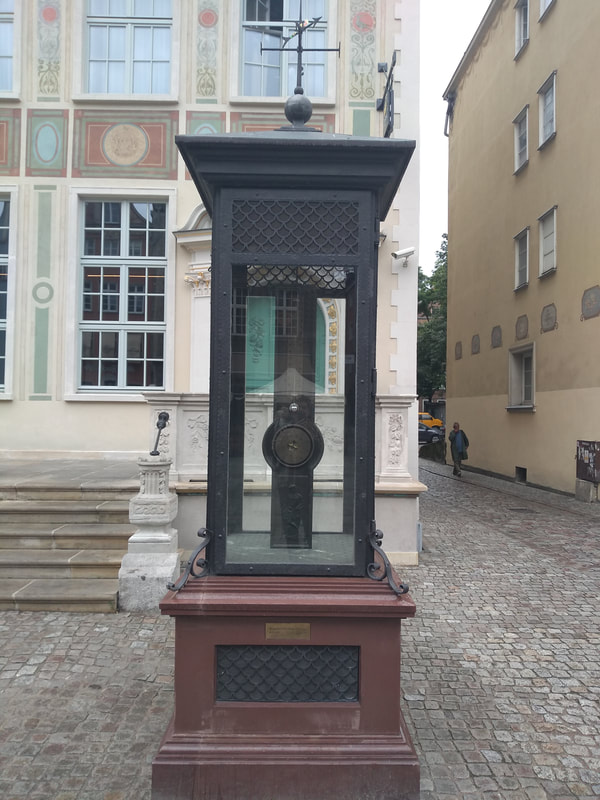
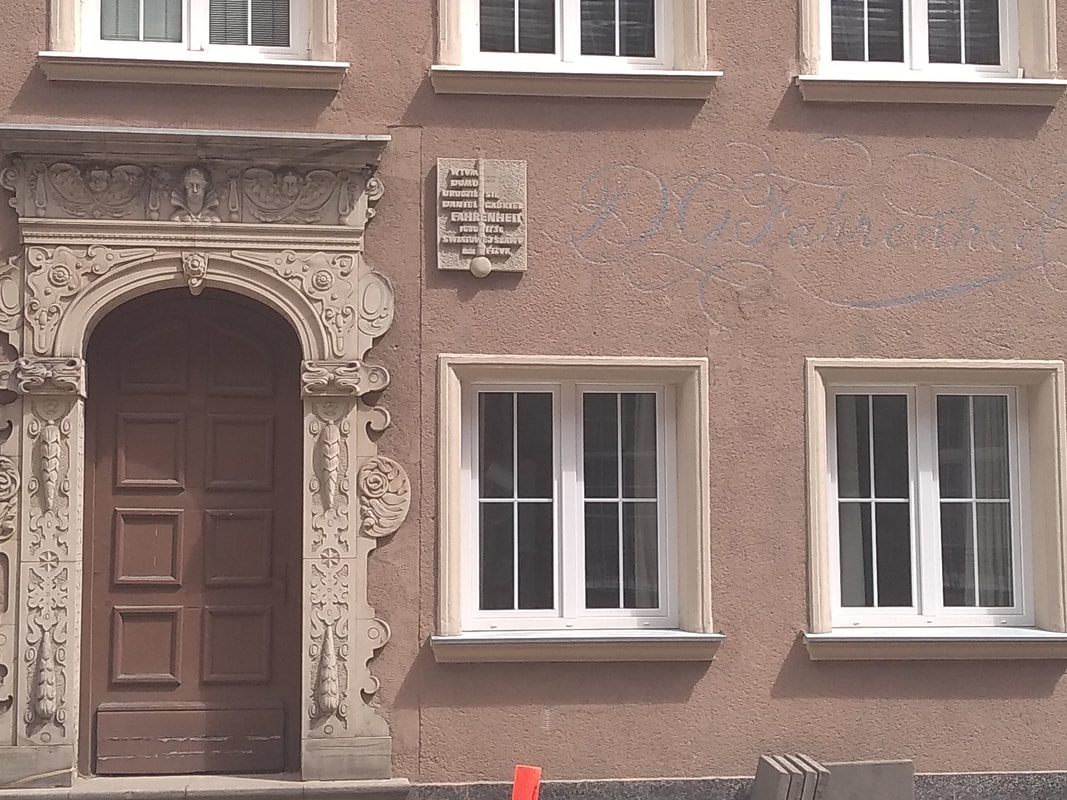
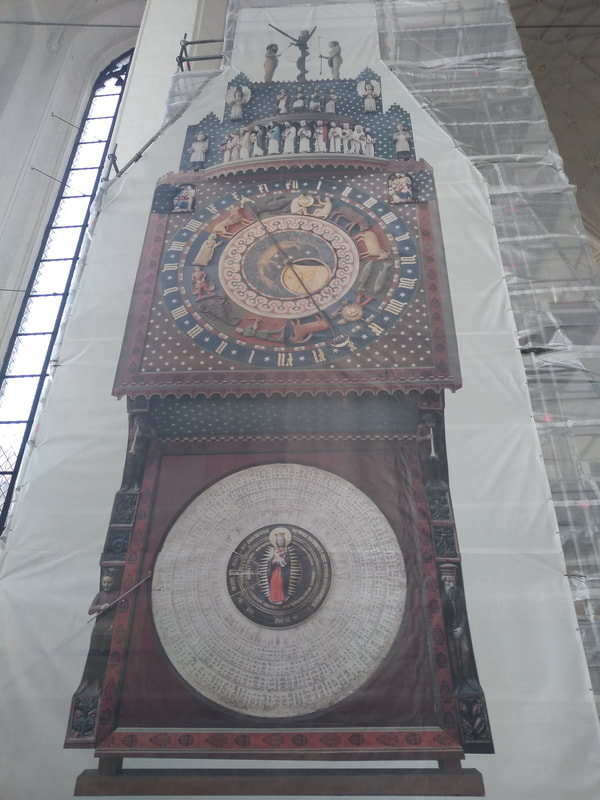
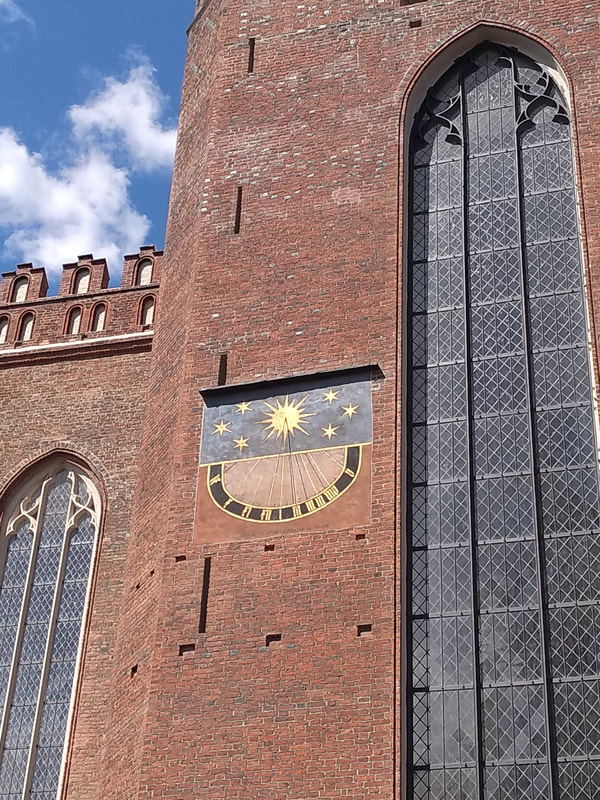
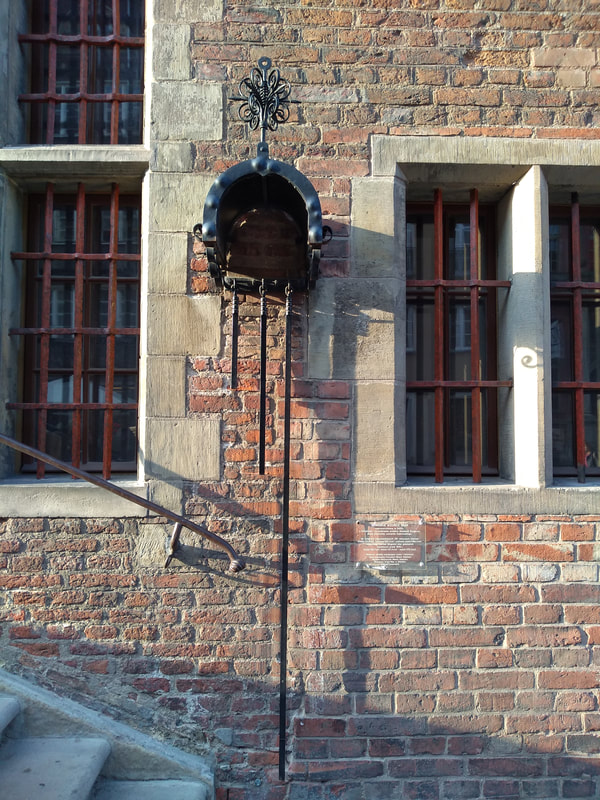
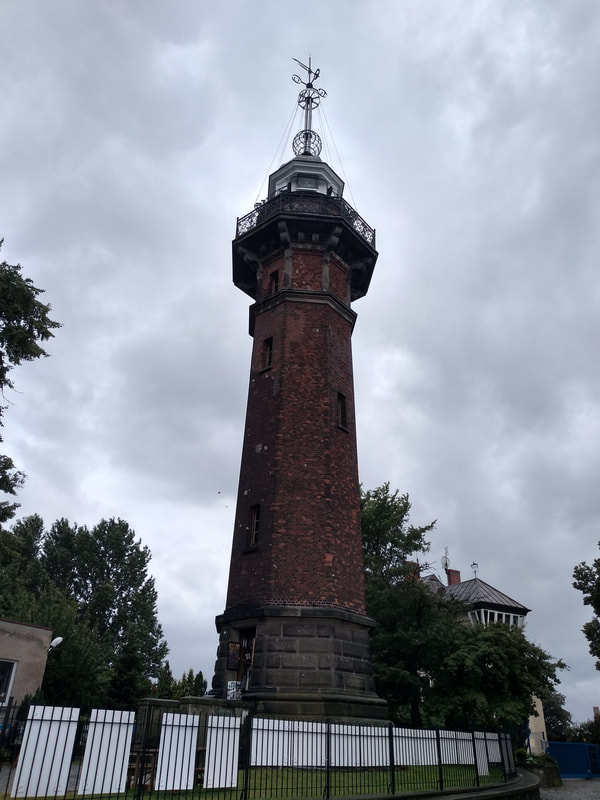
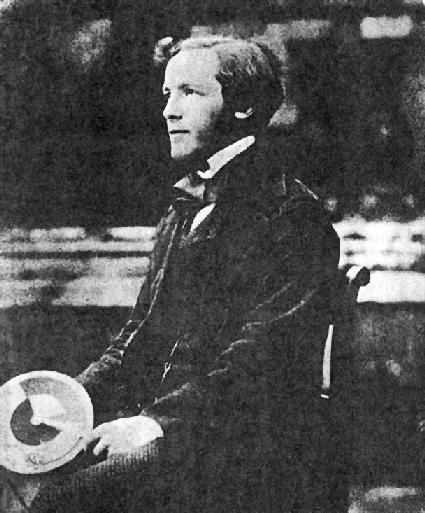
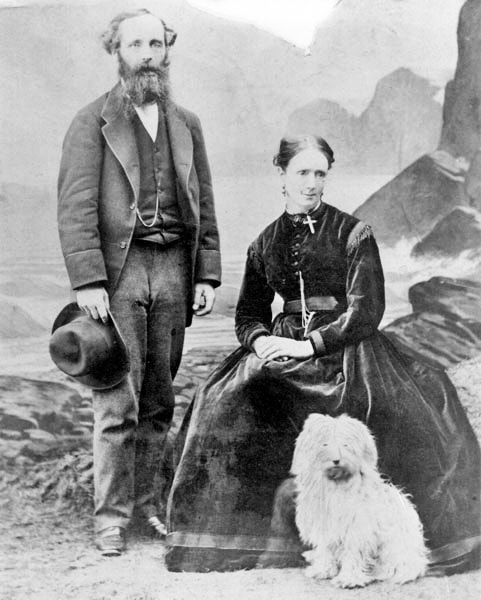
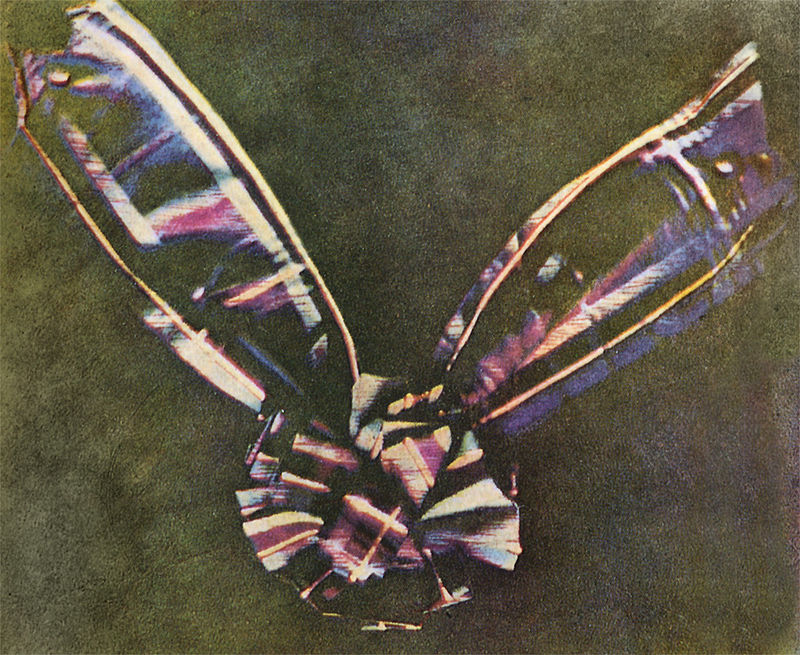
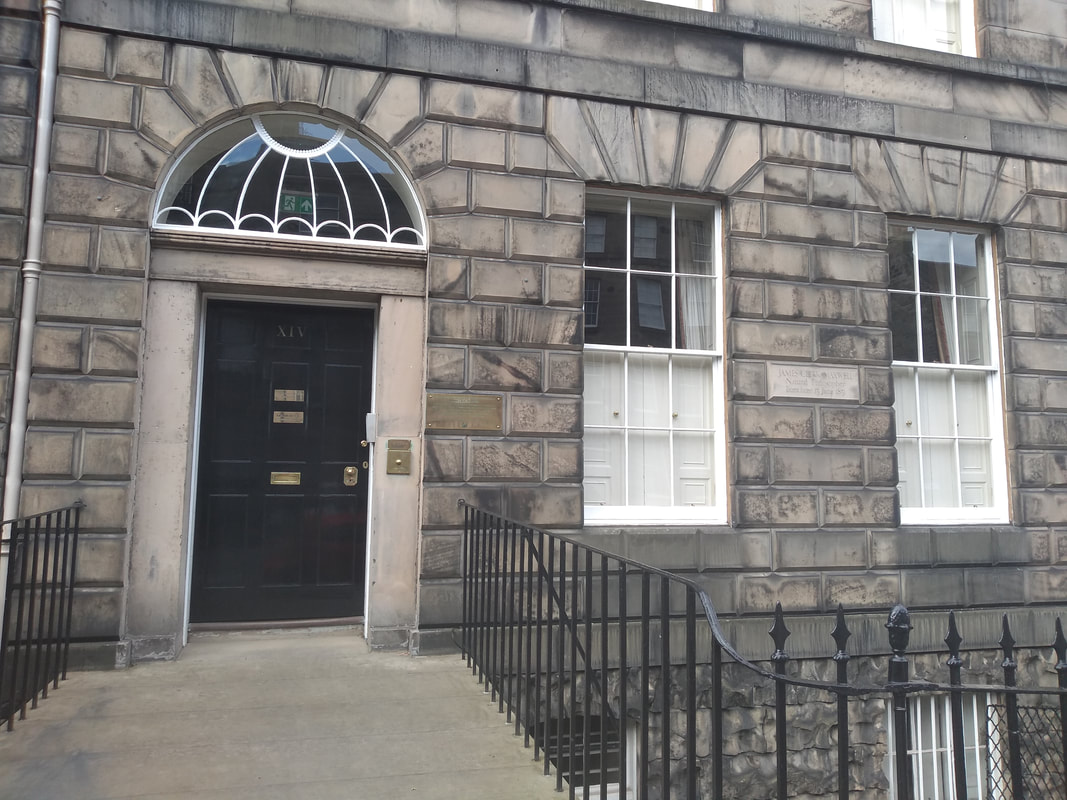
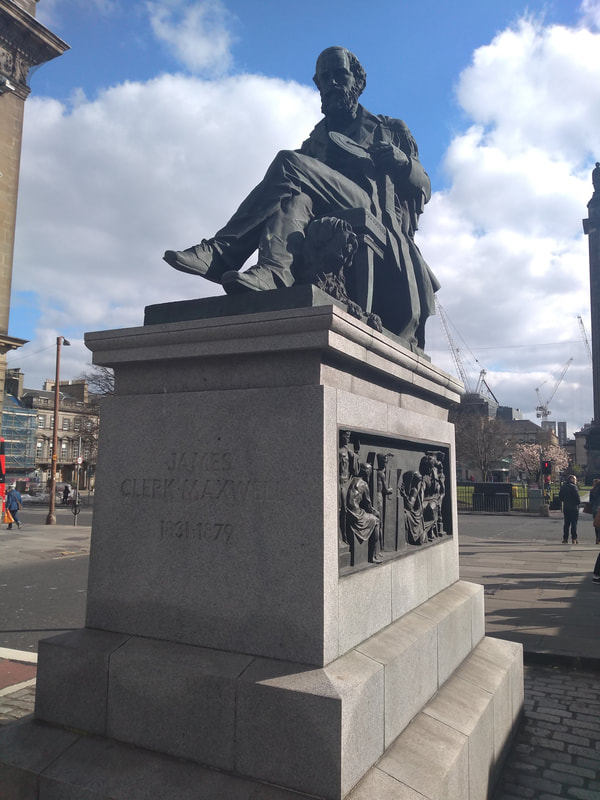
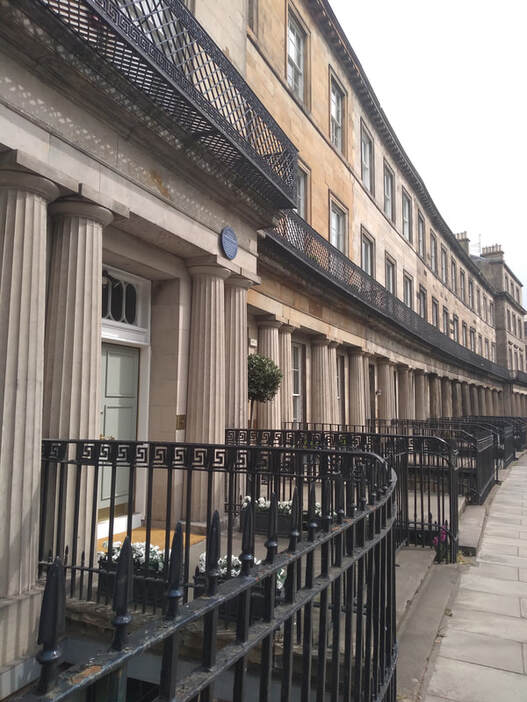
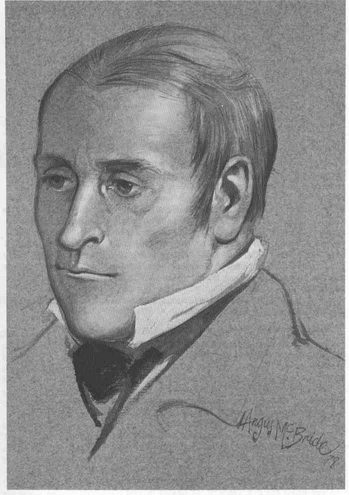
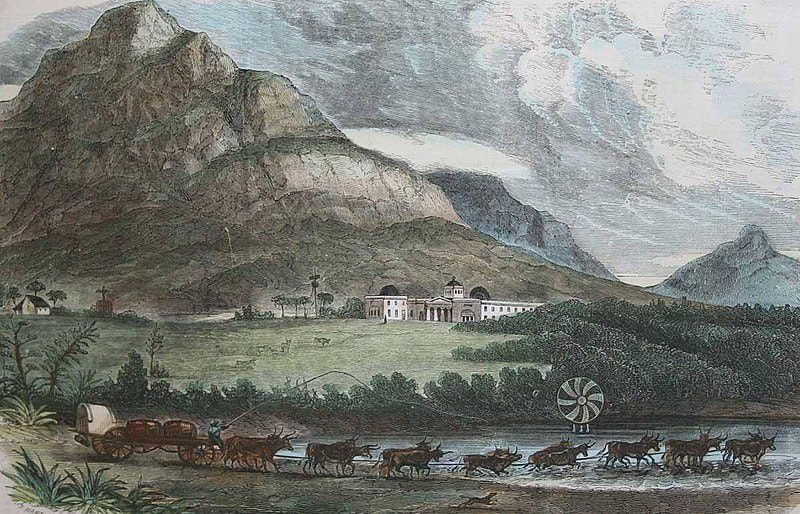
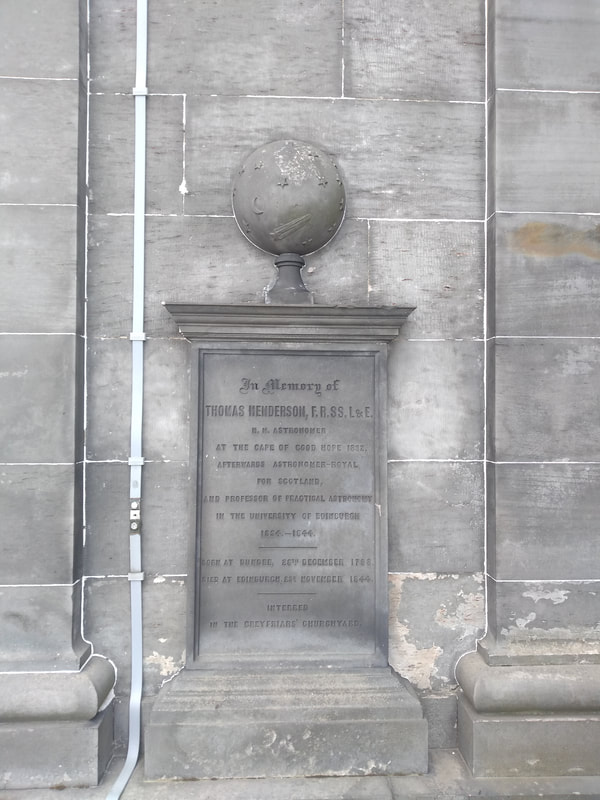
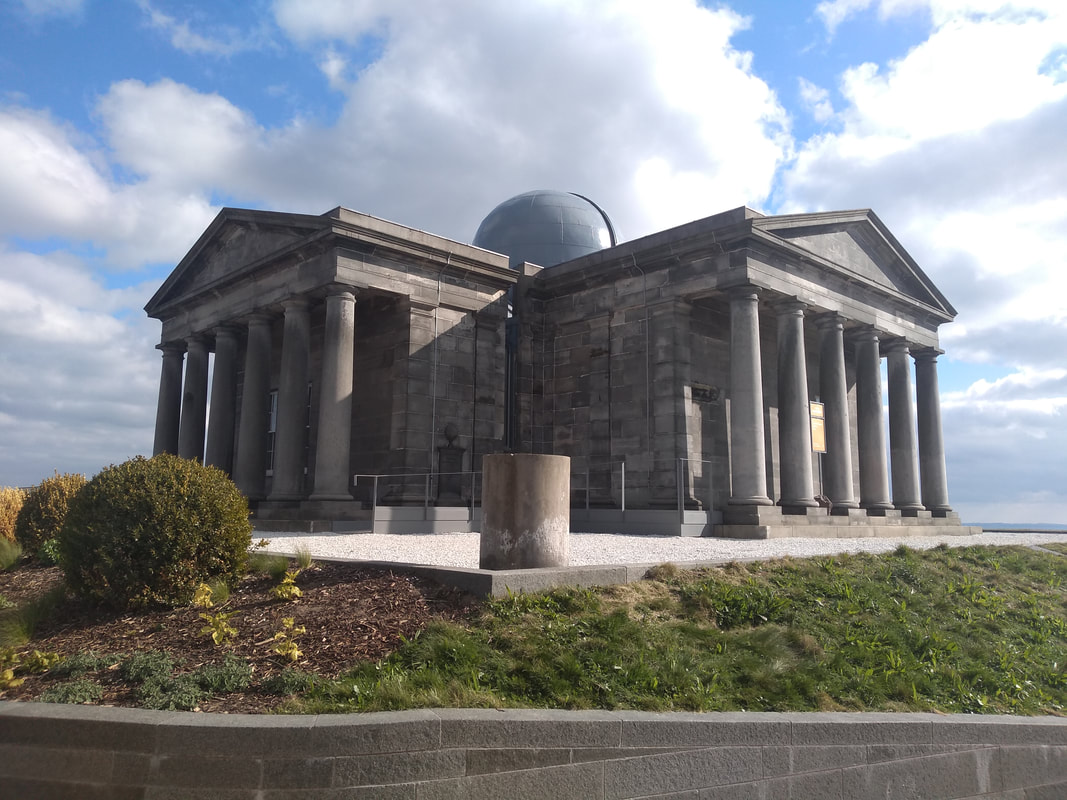
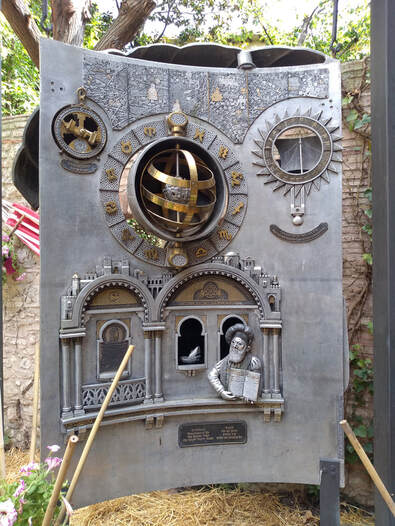
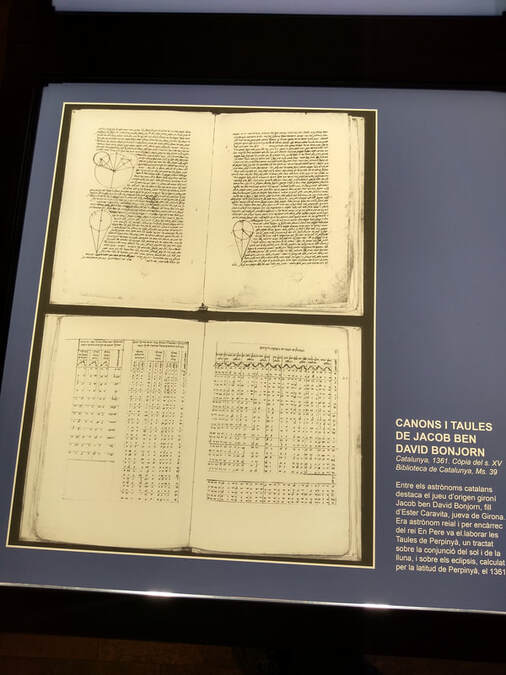
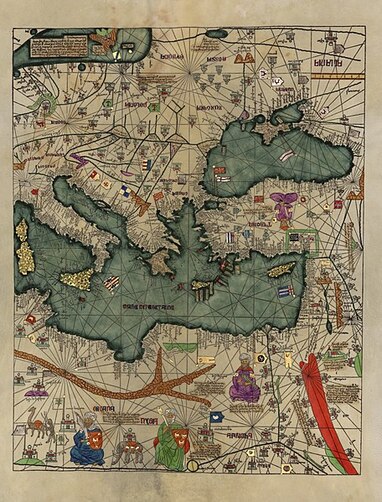
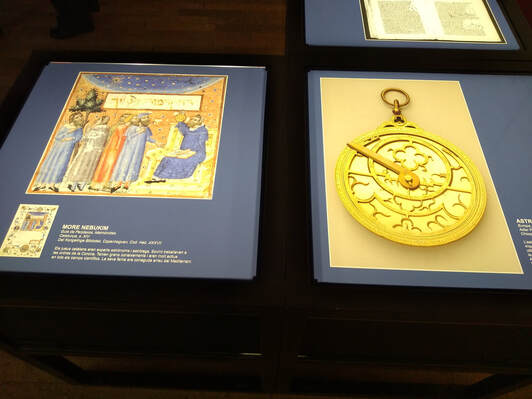
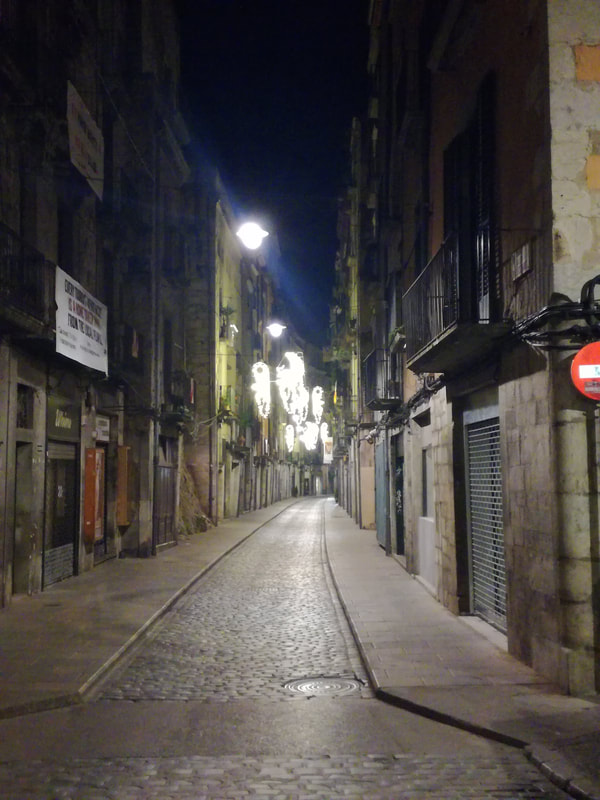
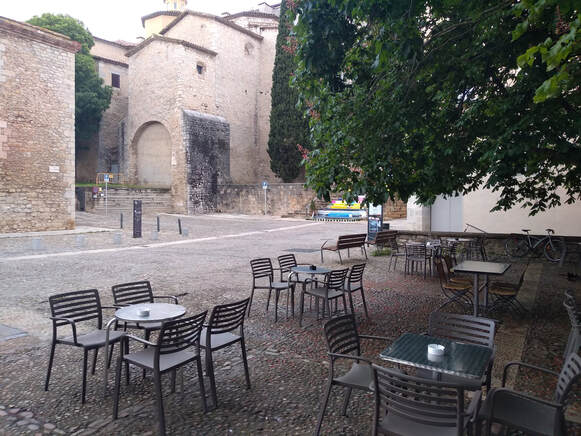
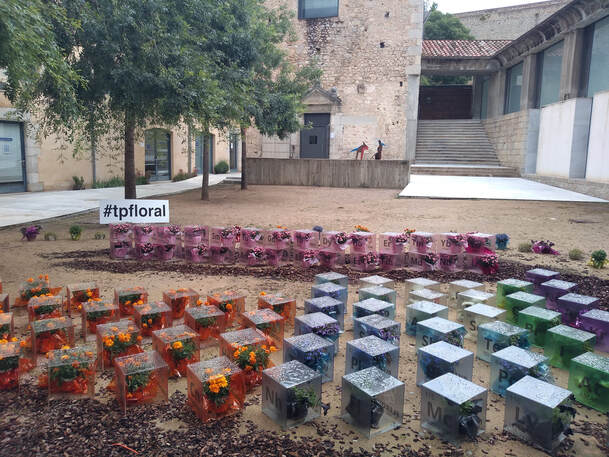
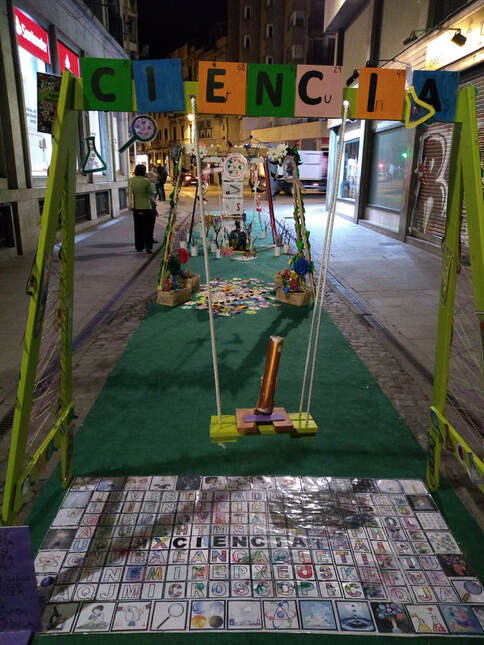
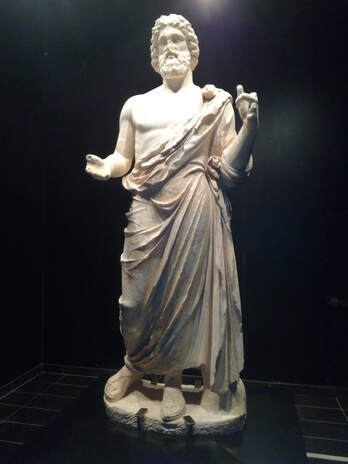
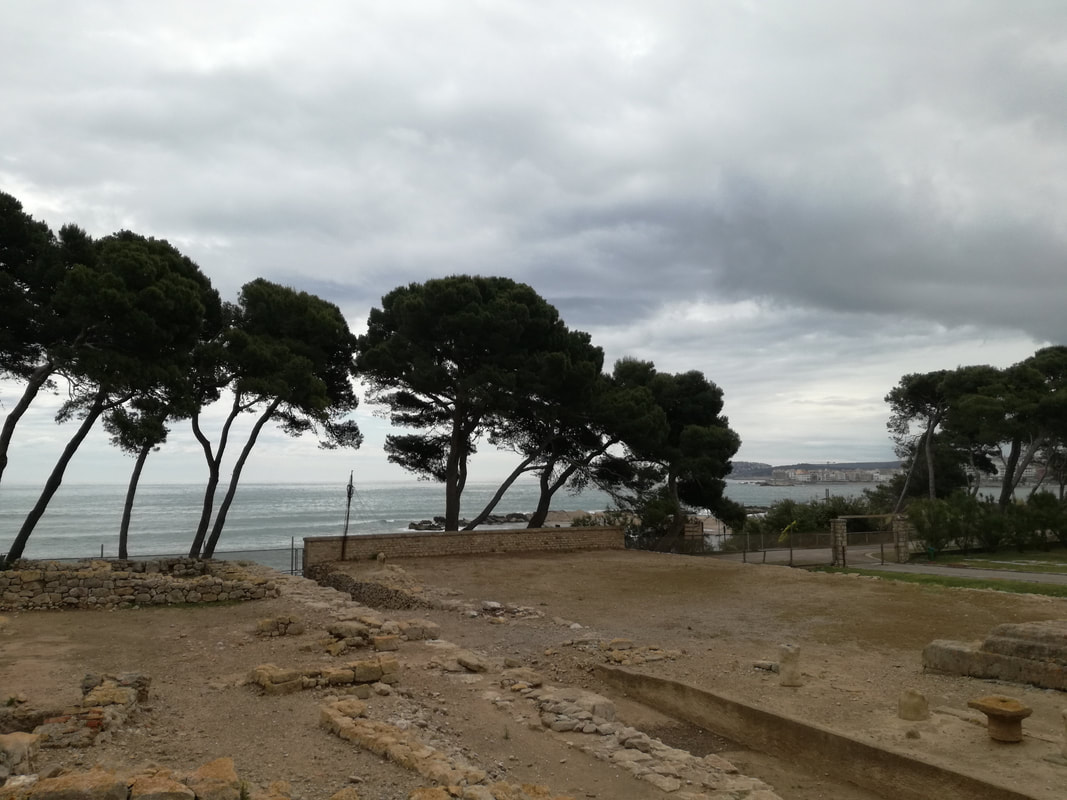
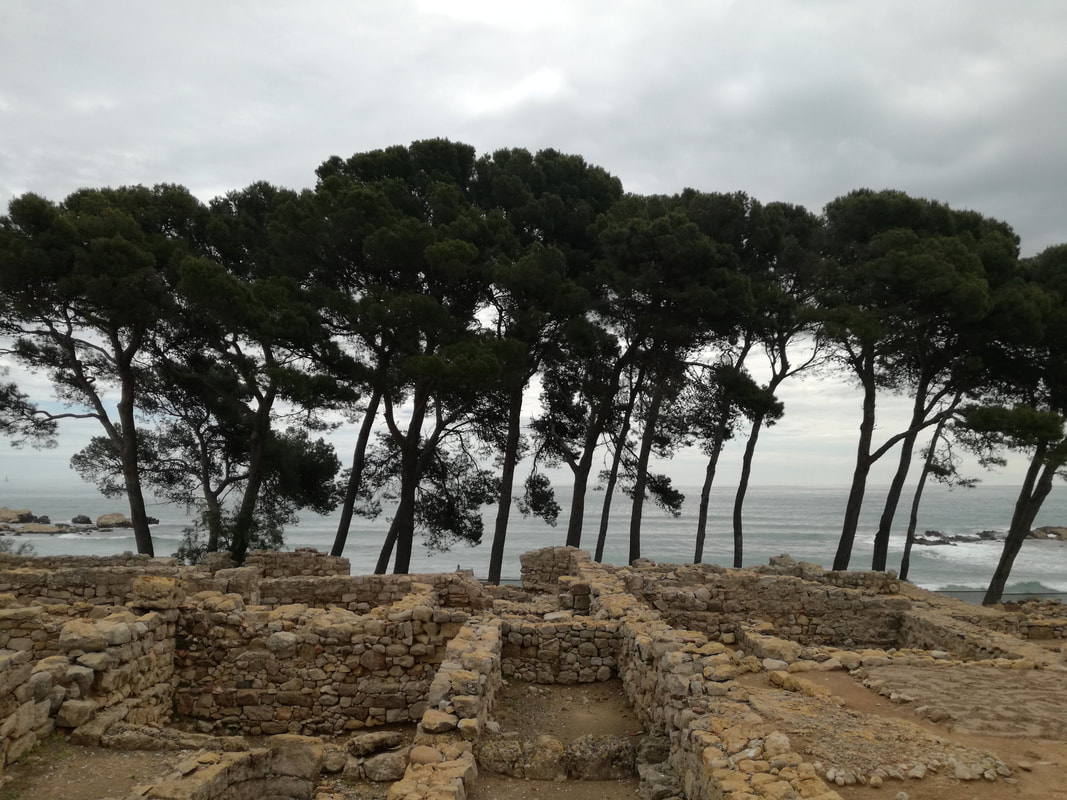
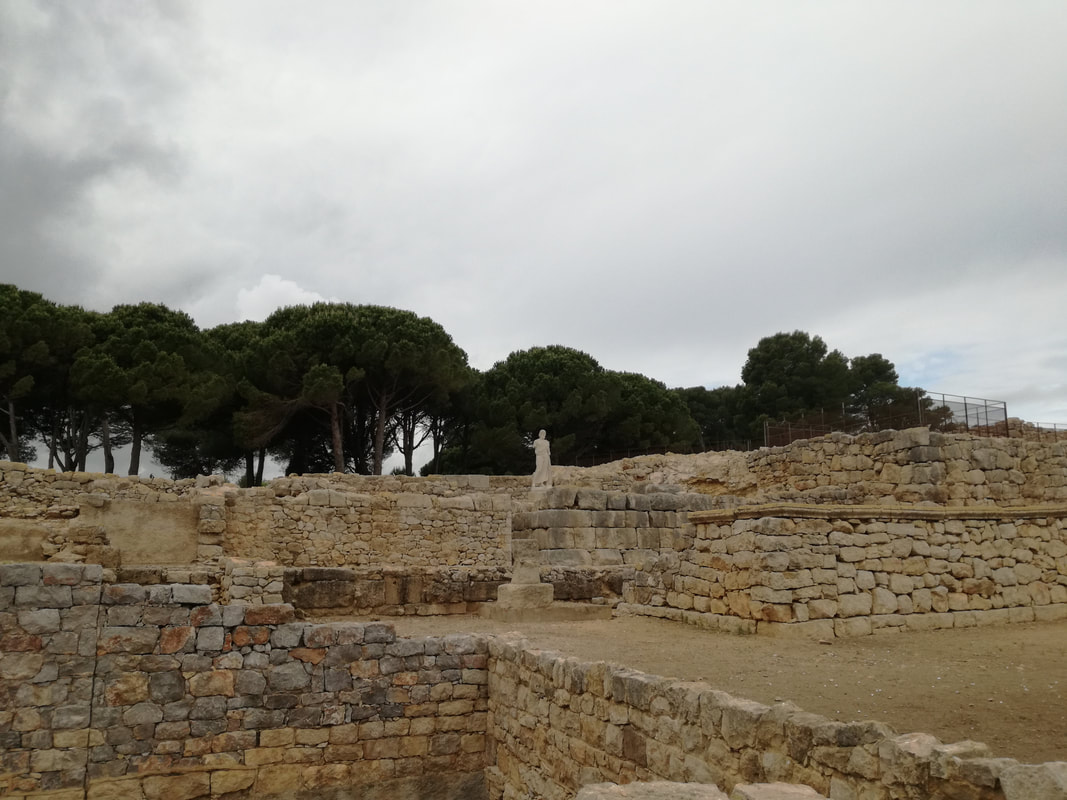
 RSS Feed
RSS Feed
